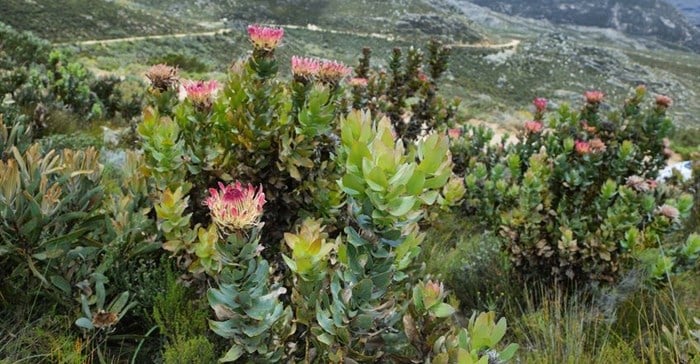
Subscribe & Follow
Advertise your job vacancies
Cape Floral region continues to be world heritage site
PRETORIA: The United Nations Education, Scientific and Cultural Organisation (UNESCO) on Friday, 3 July 2015, approved the extension of the Cape Floral Region Protected Areas World Heritage Site.

© MARIA LUISA LOPEZ ESTIVILL – 123RF.com
The approval was granted by the 39th Session of the Unesco's World Heritage Committee taking place in Bonn, Germany which started on 28 June to 8 July 2015.
The Cape Floral Region is one of the eight South African World Heritage Sites with the other seven being Fossil Hominid Sites of South Africa, iSimangaliso Wetland Park, Robben Island, Maloti-Drakensberg Park (Transboundary with Lesotho), Mapungubwe Cultural Landscape, Vredefort Dome and Richtersveld Cultural and Botanical Landscape.
The Cape Floral Region was first inscribed onto the World Heritage List in 2004. At the time of inscription, the site was made up of 8 protected areas comprising about 553,000 hectares.
The eight protected areas are located in the Eastern Cape and the Western Cape provinces and are managed by the Eastern Cape Parks and Tourism Agency, Cape Nature and the South African National Parks (SANParks).
The extension brings the size of the World Heritage Site to 1,094,742 hectares thus significantly increasing the size of South Africa's protected areas with outstanding international recognition.
These include Table Mountain National Park, Agulhas Complex, Langeberg Complex, Anysberg Nature Reserve, Swartberg Complex, Baviaanskloof Complex and the Garden Route Complex.
The extension also increases the number of protected area clusters making up the Cape Floral Region from eight to 13.
The extension also marks a new era in South Africa's listing of World Heritage Sites. The last time South Africa had a site inscribed on the World Heritage List was in 2007 with the inscription of the Richtersveld Cultural and Botanical Landscape.Since then the government shifted its focus to improving the management of the sites that are already inscribed and to put in place measures to minimise challenges experienced in world heritage sites.
As a result, no new nominations were submitted to UNESCO from 2007 until now. The extension of the Cape Floral Region is the first nomination to be submitted after the development of the Procedure for Nomination of World Heritage Sites.
As new nominations are also being compiled, it is envisaged that in the next few years the number of World Heritage Sites in South Africa will increase and thus increasing the size of the conservation estate.
In accepting the approval of the extension, Environmental Affairs Deputy Minister Barbara Thomson said: "South Africa is delighted to add more protected areas to its portfolio of world heritage properties.
"The country has in the last few years learned a few lessons in management of its world heritage sites and has through its engagement with the Committee and the Advisory Bodies achieved high standards of conservation to levels expected by UNESCO."
The extended Cape Floral Region is one of the richest areas for plants when compared to any similar sized area in the world.
It represents less than 0.5% of the area of Africa but is home to nearly 20% of the continent's flora with some 69% of the 9000 identified plant species being endemic to the area.
South Africa views the listing of our heritage as a significant part of the country's development imperatives because while it ensures protection of this highly prized heritage, it also has potential to boost economic development, create jobs and develop skills.
The country has in the last few years worked tirelessly in ensuring that conservation and development are not pursued in exclusivity of each other.The World Heritage Committee has in the last few years emphasised the need to ensure that communities derive benefits from world heritage sites, especially those living adjacent to the sites. This is a view that fits in well with South Africa's efforts to involve communities in the protection of world heritage, as custodians of our heritage.
The South African delegation is led by the Deputy Minister for the Department of Environmental Affairs, Barbara Thomson, who is supported by the South African Ambassador to France and permanent delegate to UNESCO, Rapulana Molekane.
Source: SAnews.gov.za
SAnews.gov.za is a South African government news service, published by the Government Communication and Information System (GCIS). SAnews.gov.za (formerly BuaNews) was established to provide quick and easy access to articles and feature stories aimed at keeping the public informed about the implementation of government mandates.
Go to: http://www.sanews.gov.za








